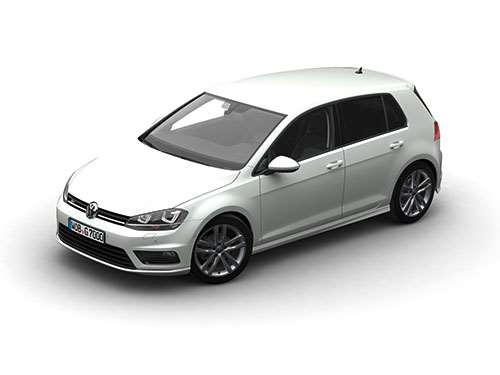Published
Lasers for Improved Design & Engineering
VW extensively uses lasers for joining in the Volkswagen Golf VII.
One part of laser technology that probably can’t be emphasized enough is the fact that it can allow not only changes in the manufacturing plant, but in the design and engineering offices. That is, deploying lasers can allow (1) design modifications and (2) improved physical properties in assembled components.
This became clear during a discussion with Tracey Ryba, product manager, Lasers—North America, Trumpf Inc. (us.trumpf.com), which provides both CO2 and solid-state (disk, diode, fiber) lasers.
A clear example of the first is found on the roofs and rear license plate surrounds on an increasing number of vehicles. Take the roof. Ordinarily when the roof and body side stamping are welded together, the result is a cosmetically unsightly seam running along both sides of the roof. The ditch welds are not pretty. So there is a trim piece that’s fitted into the ditch to cover it up.
But by using a laser—say a diode laser—the side and the roof are brought together, the laser heats the joint and a filler material is laid down. The result is a smooth seam. No extraneous additions are necessary.
Designers can take advantage of that. Another area where lasers can make a difference is in the design of window apertures. As Ryba explains, the size of flanges necessary to weld door inners and outers is greatly reduced—by as much as 60%—if laser welding is used instead of spot welding. Which simply means that there can be more open space and less metal.
This metal reduction can be carried out throughout the vehicle design, which means that the overall weight of the car can be brought down through the elimination of large flanges.
Realize also that unlike spot welding, only one-sided access is needed for laser welding, and unlike arc welding, the actual laser equipment can be a considerable distance away from the work area, so otherwise inaccessible areas can be readily reached because the work is being done by a beam of light, not a physical tool.
Then there is the issue of engineering. More and more B-pillars are being made with ultrahigh-strength hot-stamped steel. Ryba points out that cutting that material will dull conventional mechanical tools in short order. Not a problem for the laser.
Consider spot welds. As their name indicates, they are spots. But with a laser, Ryba says, “Shapes are not defined by the mechanical tool putting the weld down.”
So by using a laser to weld, engineers can determine where there might be an area that has particular forces working on it, so a shape other than a spot might be best to weld it. Lines, circles, whatever can be readily programmed and executed with the laser. Multiple shapes can be performed in short order. Really short order in the case where laser scanners are used.
According to Ryba, in one case, it required 45 seconds to laser weld a part with a system using fixed optics. This was brought down to 7 seconds with a laser scanner. He admits that that was a unique situation, but that the amount of cycle time can generally be reduced by as much as half. It is not, he explains, that the welding itself is being performed any faster, but that the time it takes to move the fixed optics—such as with a robot—from point A to B, B to C . . . is what makes the cycle time longer than is the case when the optics themselves are moving, as the light is being manipulated by mirrors.—GSV



